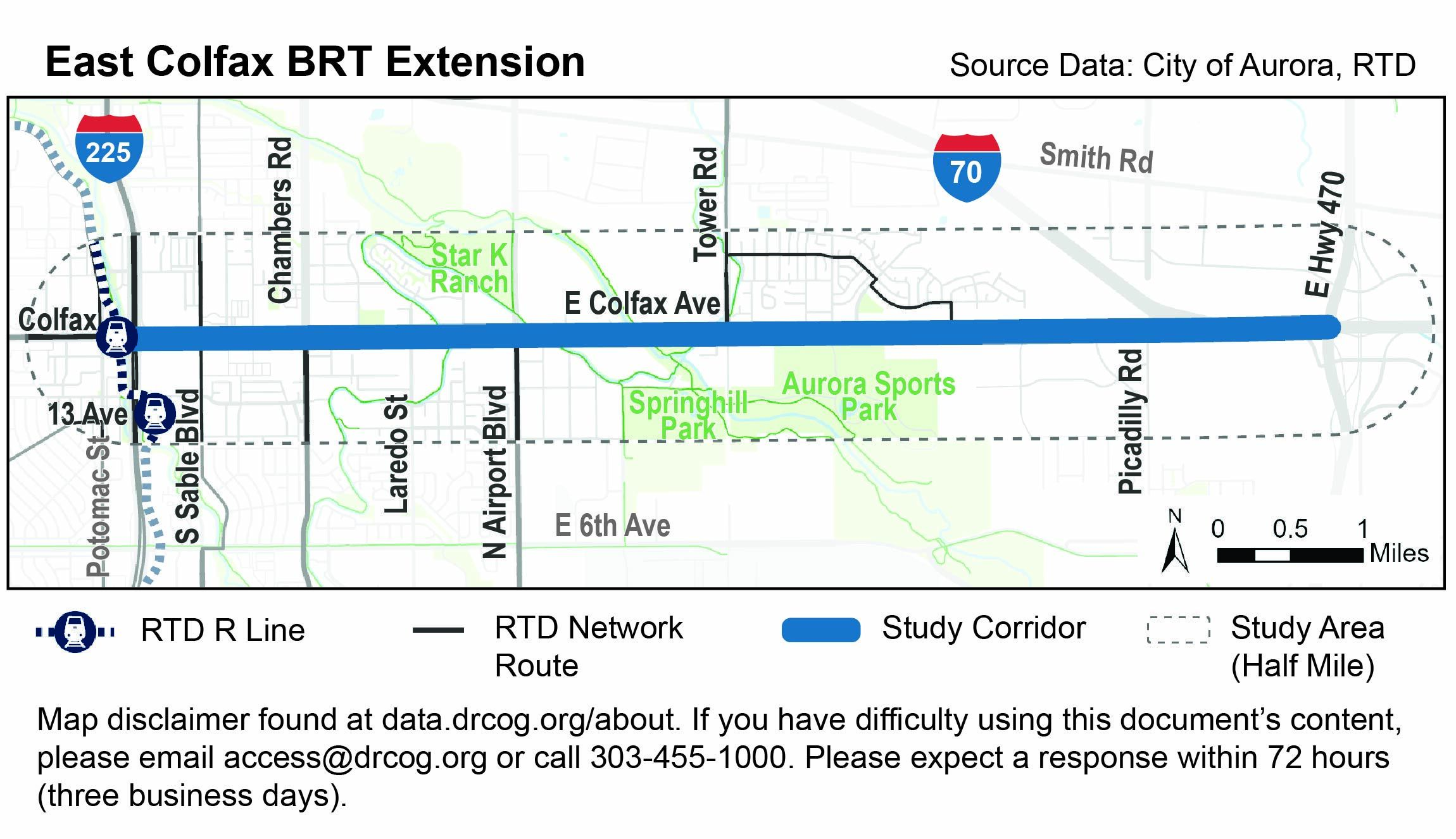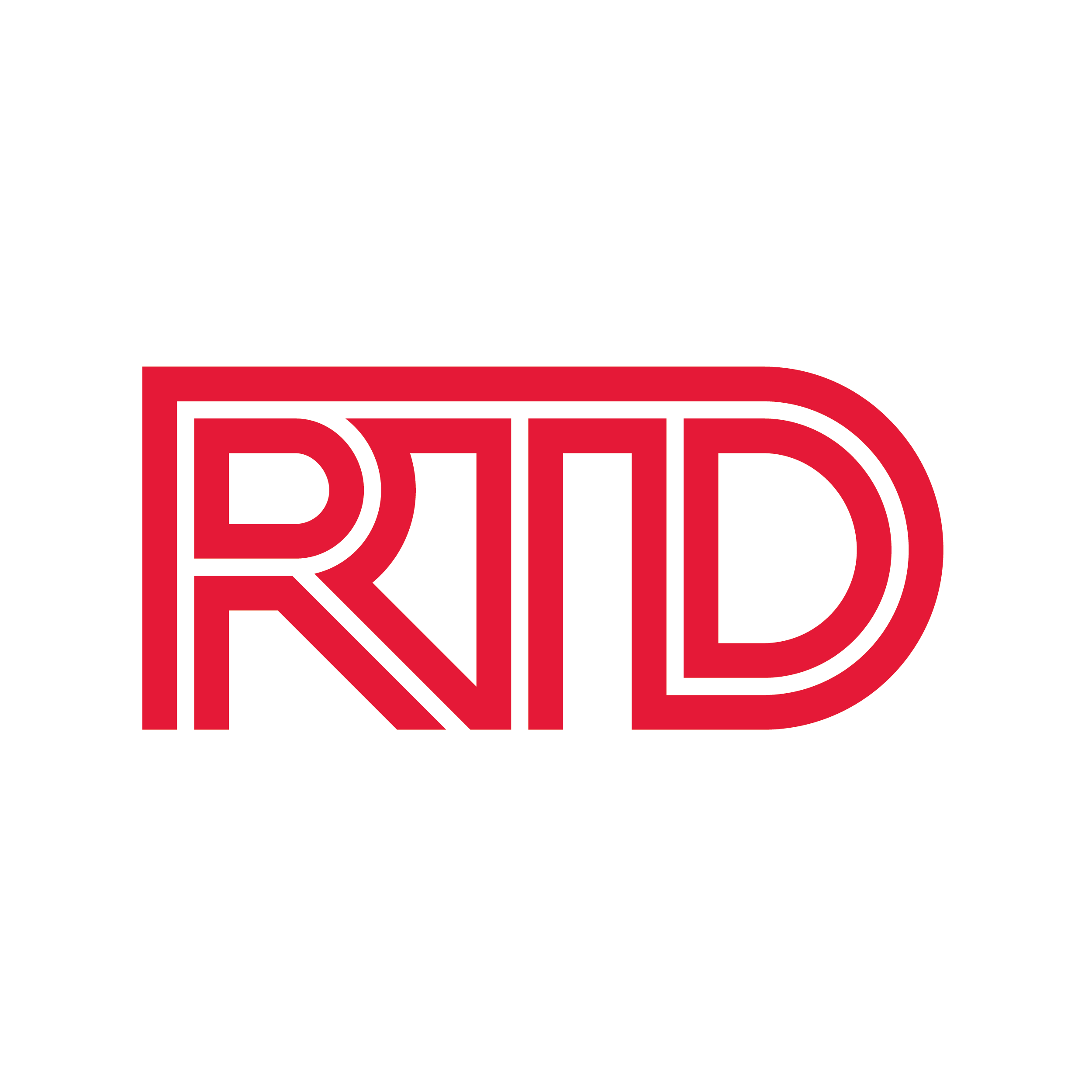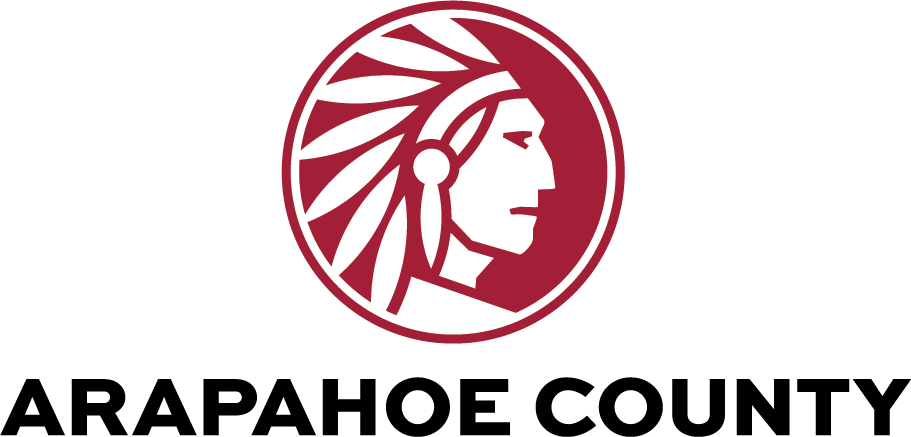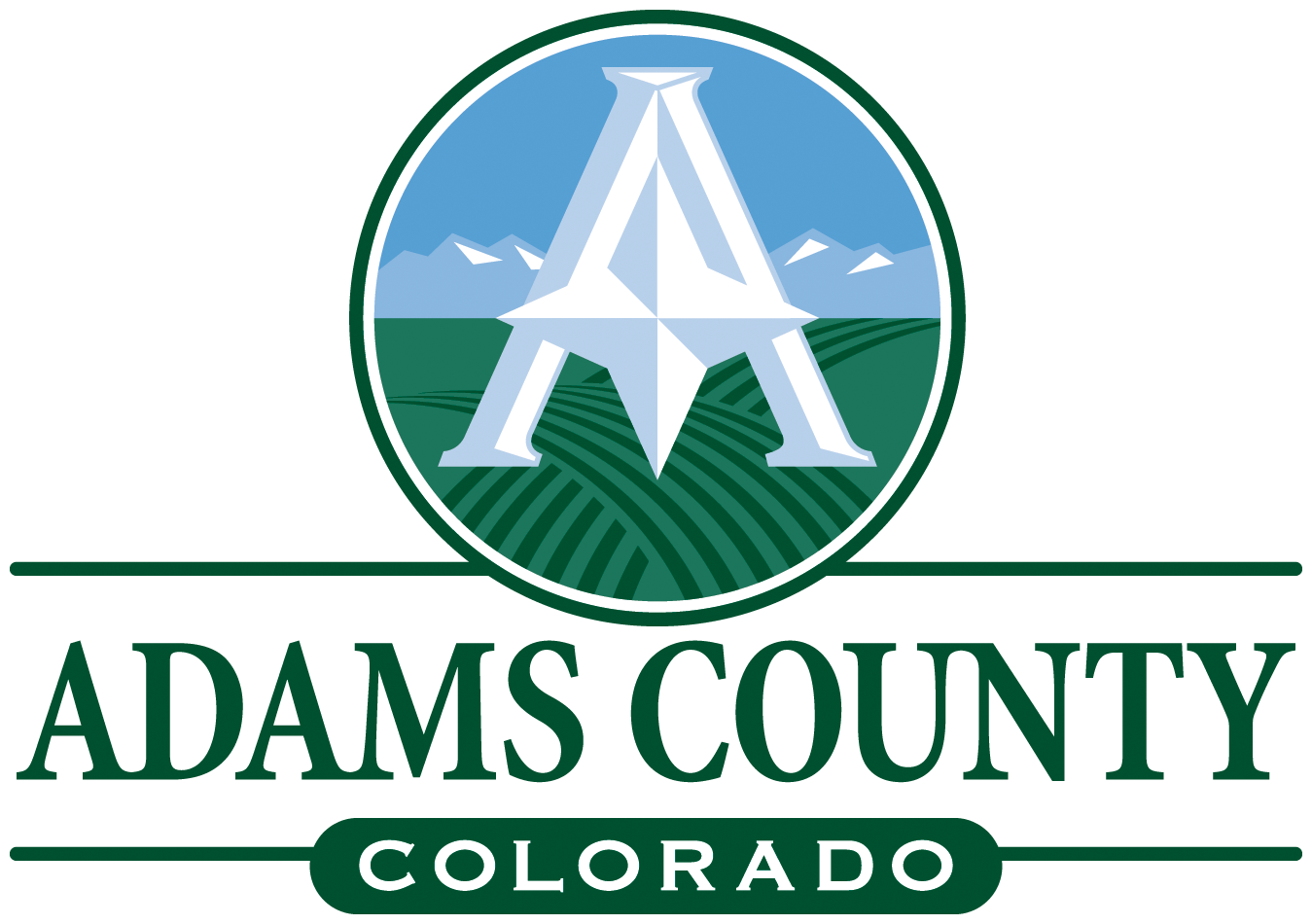
Project overview
DRCOG is funding and managing the Colfax BRT Next study in partnership with the City of Aurora, Arapahoe and Adams counties, RTD, and CDOT. The study will identify future bus rapid transit, known as BRT, options serving East Colfax Avenue between the RTD R Line's Colfax Station at I-225 and Picadilly/E-470. This corridor is part of DRCOG’s 2050 Regional Transportation Plan BRT network and among five BRT corridors slated for implementation by 2030.
The alternatives analysis study will identify a locally preferred alternative for advancing BRT, and a pathway for securing funding for further project development and implementation. Once implemented, BRT will move people more efficiently, safely and sustainably along the Colfax corridor between I-225 and Picadilly Road/E-470, and will connect to the East Colfax BRT project currently under construction between Denver and Aurora. The Colfax BRT Next study was initiated in late 2024 and is anticipated for completion by end of 2025.
Project video
Check out the Colfax BRT Next project video, created and produced by Aurora TV.
Project study area

Project background
The project aligns with the City of Aurora’s transportation planning efforts and DRCOG’s 2050 Regional Transportation Plan to implement a regional network of BRT across the greater Denver region. With growth anticipated along this portion of East Colfax, enhanced bus service will inform future development and create a safer, more efficient and cost-effective way for community members to access jobs, essential services and regional amenities.
Project partners










